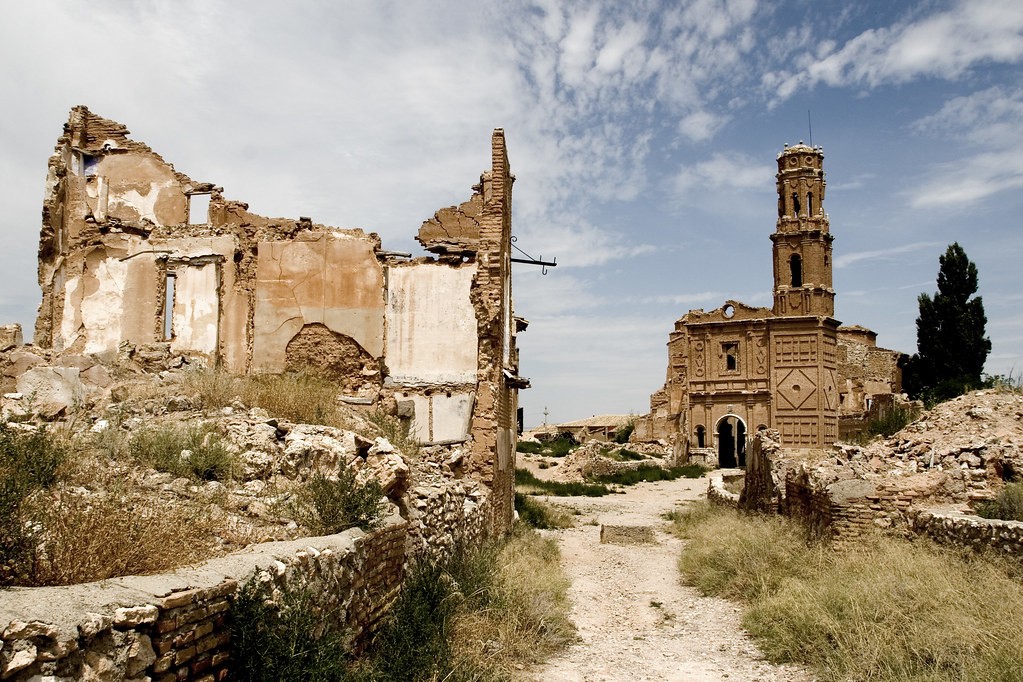
The tiny village of Belchite in Zaragoza, in northwest Spain, is a testament to the ravages of war and a great place to visit if you want to find out more about the Spanish Civil War. Not your typical tourist trap, this living museum allows visitors to learn more about this troubled time in Spanish history.
Just 30 miles from the provincial capital, Zaragoza, and easily accessible by car along the A-222, Belchite is a town with a long history, with the first settlements being made there as far back as 75 AD. Over the centuries, it was built up with beautiful medieval churches and monuments such as the arc of San Roque.
However, things turned dark with the outbreak of civil war in Spain (guerra civil) in 1936. Belchite, on the border between the republican state and the fascist forces, became the site of one of the bloodiest and most important battles of the whole war. The town was initially held by the nationalist army after General Francisco Franco’s coup d’état but was captured by the rebels in 1937 during a fifteen-day siege that all but destroyed the village.
In the Battle of Belchite, the houses were bombed to shreds, the churches razed and the townspeople slaughtered. The scenes were reminiscent of the destruction that had been witnessed in Guernica a few months earlier and which Pablo Picasso immortalised in his painting of the same name. Ernest Hemingway, Martha Gellhorn and many other foreign volunteers in the Republicans’ International Brigade were shocked at the horror they saw. One journalist described “a town so totally ruined that often one could not tell where the streets had been. People were digging under piles of mortar, bricks, and beams pulling out corpses.”

When Belchite was reconquered by Spain’s dictator, Franco, in 1938, he left it to stand as a reminder of his awesome, brutal power and as a warning to any who tried to cross him. Nowadays, the town is still there, but serves rather as a reminder of the futility of violence and its human cost. While parts of the town of have been rebuilt and there is a population of 1,600 people living there, many parts of it are still as they were during the war.
The remains of rubble, the sad shells of buildings and the cathedral riddled with bullet holes are a stark reminder of the realities of war. They have been used as the setting for such period films as Guillermo del Toro’s ‘Pan’s Labyrinth’ and have become a little-known tourist attraction.
What to do in Belchite
There are two tours of Belchite available: one during the day and another at night-time, when the village takes on a spooky, otherworldly feel. You can get tickets for a guided tour of Belchite from the tourist information office or buy tickets online and learn all about its past and the guerra civil española, while the Ethnological Museum is open on Saturdays and Sunday mornings. For those interested in the recent history of Spain and the dictatorship, which only ended in 1975, a visit to Belchite is an unmissable alternative place to visit in Spain.
- Website: www.belchite.es
- Tour price: 6 euro